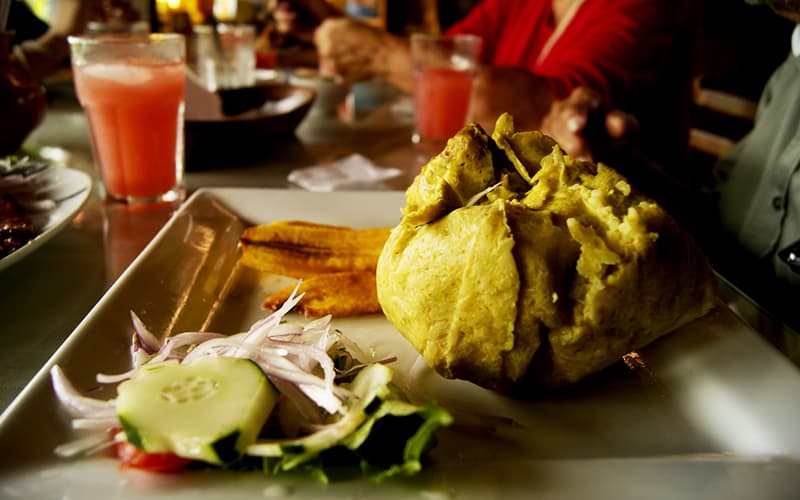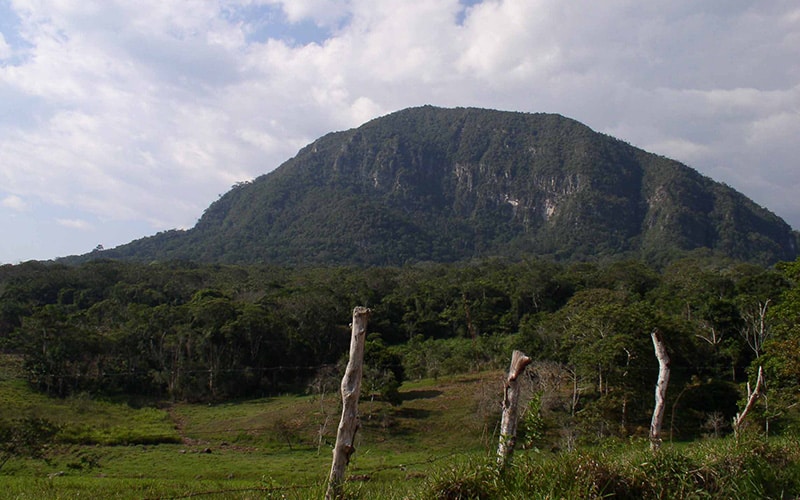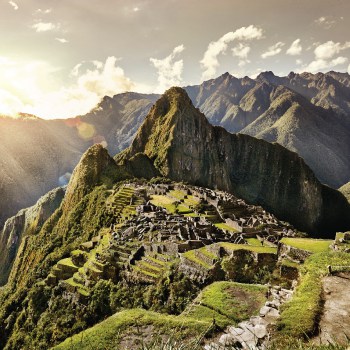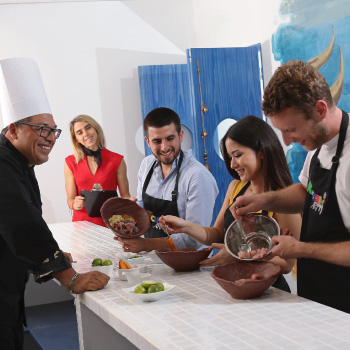Moyobamba Travel Guide
Do you know about the small, beautiful city in Northern Peru, called Moyobamba? Often considered to be a hidden part of paradise in the elusive Amazon Rainforest, this is the perfect place to experience adventure, nature, culture and Amazonian cuisine. With a great diversity of flora, fauna and cultural expressions, Moyobamba is without a doubt the perfect place to kick-start your bucket list adventure in South America.
Click on a link below to see more information
- About Moyobamba
- Things To Do in Moyobamba
- Festivals and Events in Moyobamba
- The City of the Orchid
- Weather in Moyobamba
- Food in Moyobamba
- Restaurants in Moyobamba
- Drinks in Moyobamba
- Nightlife in Moyobamba
- Where to Stay in Moyobamba
- Getting to Moyobamba
- Getting Around Moyobamba
- Safety in Moyobamba
- Traditional Dances in Moyobamba
- Folk Law of Moyobamba
- Ayahuasca in Moyobamba
- Additional Facts About Moyobamba
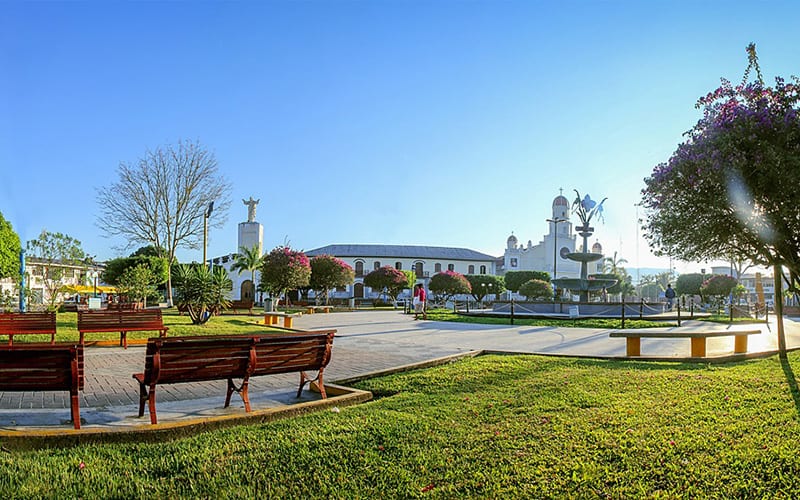
About Moyobamba
Capital of the San Martín region in Northern Peru Moyobamba is also known as “Ciudad de las Orquídeas” (City of the Orchids’) because of its wide variety of the flower. This lovely city, with a population of 80,324 people, is located at 860 meters above sea level.
The first colonies in the area were from the Chachapoyas’ culture, but Juan Pérez de Guevara established Moyobamba officially on 25 July 1540, giving it the name Santiago de Los Ocho Valles de Moyobamba.
Moyobamba was founded on top of an Inca settlement, and it was the first city in the Peruvian Amazon to be built by the Spanish. There were regular missions here dedicated to converting the native people to Christianity, and so it quickly became an important area for the religion, and later an important commercial center during the Spanish Colonial period.
Things to Do in Moyobamba
- Aguas Termales of San Mateo (Hot springs of San Mateo): These pools are known not only for their natural beauty but also for their medicinal and therapeutic properties, such as helping to soothe stress and muscle pain, as well as arthritis.
- Climb Morro de Calzada (Calzada Hill): Just 15 minutes from the city, this hill lies just outside of the eastern mountain range. It has become famous amongst the locals for its views of the Alto Mayo area and is the perfect place for hiking, and camping. It’s also home to plenty of species of birds and the Titi monkey, an endangered species native to South America. Watch out for them when you visit!
- Paccha Waterfall: Located just 20 minutes drive from Moyobamba in the Jepelacio district, this waterfall has four different platforms with an overall drop of around 30 meters. It is known for its crystal-clear water, lush vegetation, and it’s wild orchids. This is the perfect place to visit with your family or friends. But be aware, it is not recommended to go by yourself. Also, don’t forget to bring a picnic, as there are no restaurants in the area.
- Lahuarpía Waterfall: Located around 30 minutes from Moyobamba, this natural resource is well known for its beautiful landscapes which make it the perfect place for taking amazing pictures. The waterfall has two falls, each of 12 meters in height, which land in a beautiful natural pool. This spot is quite remote, and robberies have been known to happen on the road in the past- make sure to ask about the security station before you visit.
- Ecological Reserve of Tingana: This is one of the most visited places in the whole region. Spend the day in this temporarily flooded forest, surrounded by the trees native to the jungle, such as aguajales and renacales. You will need to take a tour, which begins at 6 am, (the earlier the better!). Through the day you will see many types of endangered and vulnerable animals. Being one of the highest marshes of the Peruvian jungle makes it the perfect place for ecotourism, field studies, and experiential tourism. To top it off, it also has up to 240 different identified species of birds, so pack a pair of binoculars!
- Have Fun at Tioyacu Spring: If you’re on the hunt for a destination with beautiful landscapes, fresh water to swim in and local food to try, Tioyacu is the perfect place. The source of the Tioyacu River’s crystal-clear water is a spring at the base of a high mountain. This is what creates the unforgettable natural pools you will find. Don’t forget to buy an adorable local souvenir, all are with cheap prices and from great people.
- Discover Palestinas’ Cave: This karstic cave is an amazing off-the-beaten-track destination for adventure sports lovers. Let yourself be captivated by the spectacular limestone formations that make up the scenery. Inside the cave you’ll find a crystal-clear water spring and a variety of bird species. The local people are in charge of the tour; you’re in good hands, they know the place better than anyone. You’ll receive safety equipment before the tour begins.
- Boulevard of Tahuishco: Be sure to visit this natural viewpoint, located in the urban area of the city. Looking from above you’ll appreciate the Mayo river, one of the most important inflows of the region. This is one of the main access points to the port of Tahuishco. The boulevard is the perfect peaceful spot to take pictures, eat some local snacks and enjoy the beautiful sunset.
- Tahuishco’s Port: Located on the riverbank of the Mayo, the port of Moyobamba is one of the oldest commercial points in the city. There are small boats available to rent if you would like to take a tour down the river, and you can enjoy the wildlife and the scenery.
- Waqanki: This is a private conservation center located in Jepelacio district of the Moyobamba province. It is well-known for its orchids exhibition, which includes the Kovachii orchid, considered to be one of the most beautiful flowers in the world. Additionally, there is a hummingbird observatory where you can see up to 23 different species of hummingbird, a truly fantastic day out!
- San Martín’s Museum: Don’t miss out on a visit to this archaeological and historical museum. It has 6 showrooms to exhibit narratives from the area’s first European settlers, as well as cultural artifacts from the Chachapoyas and Inca civilizations. Let yourself be captivated by fossils, a mock-up of the Gran Pajaten archaeological site and different types of ceramics from Chachapoyas, Lamas, and Chazuta- all important civilizations of Peruvian history. There are even war instruments, scepters, textiles and funerary bundles to see.
- Chocolate Museum: Moyobamba has a small but special chocolate museum, located on Tahuishco’s Boulevard. Full of color and flavor this little place is decorated with different tools to prepare chocolate and coffee. It even has wooden statues representing the indigenous people of the jungle, and the origin of chocolate in South America. Treat yourself to high-quality chocolate and organic products, as well as cocoa powder, handmade chocolate, and organic coffee. Delicious as a treat for yourself, or as a souvenir to take home with you.
- Centers of Traditional Coffee: Relatively new to the city, these places offer different kinds of local coffee. We recommend Makisappa Coffee or Mishki Coffee. Not just great for drinks, but also for special desserts, combining local fruits with sugar and pastry for irresistible flavors.
- Lejia Yacu Waterfall: If you are looking for a day out where you can revel in peace and quiet, you will love Lejia Yacu. The waterfall has three different levels of natural falls. The first, with a height of 60 meters, the second of around 8 meters and the third, roughly another 60 meters. On each of these levels, natural pools have formed. Take a dip in the water, the coldness of it will be extremely refreshing! There is also a huge amount of natural vegetation, such as orchids and bromeliads to accompany you on your swim.
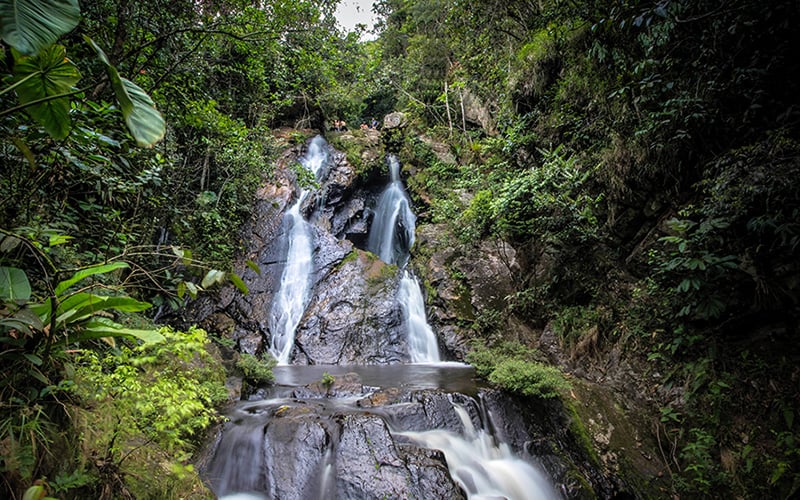
Festivals and Events in Moyobamba
This center of cultural expressions has many representative customs that are the pride of Moyobambinos. Among the main attractions there are:
- Moyobambino Carnival: This is a greatly traditional festival which is characterized by the presence of Patotas (groups of costumed people generally with painted faces), cabezones (giant dolls) and colorful paint and clothes. It’s a celebration where everybody gets soaked with water balloons, and there’s a huge party to finish the festival.
- Corpus Christi: Celebrated in May, it’s a wonderful time of year when all the local people get together in the Plaza de Armas in the city to participate in religious celebration, a tombola, and enjoy local food and drink together. It usually starts at 8:00 pm and the evening is rounded off with fireworks that will definitely leave a sparkle in your eye.
- Tourist Week: From June 23 to June 30, Moyobamba celebrates Fiesta de San Juan y San Pedro (St. John’s and St. Peter’s Party). During the week there are many parties all the way across the city, at houses and local places alike. People get together as a band plays traditional music, the people eat traditional food and of course, local drinks are flowing.
- Santiago (Saint James) Patron Saint and Moyobamba’s Anniversary: Full of folklore and tradition, the day of Santiago Patron Saint is celebrated on 25th of July. The celebration takes place at the Plaza de Armas and the evening of the huge firework display starts at 10:00 pm. It’s very common to eat local food and join in with the local dances, or you can just watch from the edge if you’re feeling shy.
- Festival de la Orquídea (Orchid’s Festival): If you ask a local of Moyobamba which plant is most representative of the people and of the town, they will tell you the orchid. And so it only makes sense that they would celebrate with a four-day-long festival for the flower. Every year, from the 1st-4th of November a huge variety of orchids are shown off throughout the town, and many scientists come to give seminars and workshops about the plant. Even better, these activities are almost always free!
Moyobamba; The City of Orchids
As you may have already realised, Moyobamba is the prime location for orchid lovers and green-fingered fans of exotic flora. With up to 3500 species of the plant worldwide, Moyobamba boasts a staggering 10% of the orchid species in the world. This exotic plant represents one of the main sources of tourism in the region and, with an orchid festival at the end of October, it’s easy to see why gardeners flock here. Two establishments are particularly popular for viewing the regional plant life: Jardín Botánico San Francisco (San Francisco Botanical Garden) and Waqanki Orchid Center. It is just S/. 3 entry for adults and S/. 1 for kids.
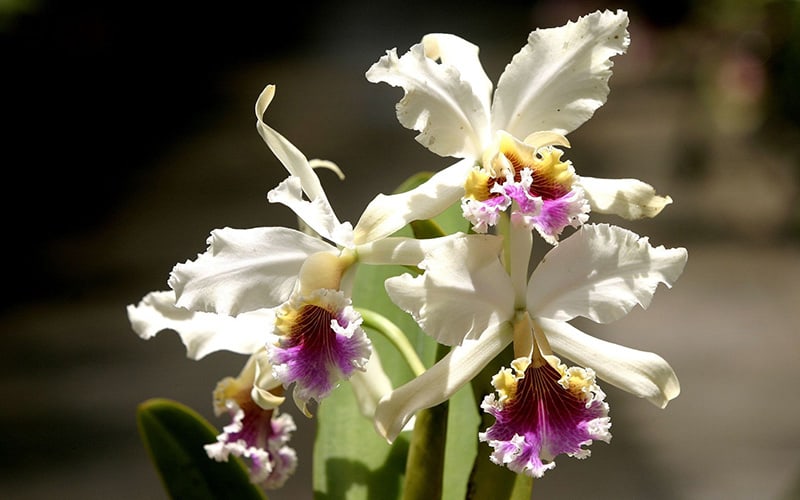
Weather in Moyobamba
Moyobamba has a wonderful tropical climate, with rainy periods from January to April. San Martín is on the warm banks of the Huallaga River and temperatures peaks on the summit of the Cordillera Central, varying according to altitude. The maximum annual average temperature is 29º C and the minimum temperature is 18º C, wherever you are the weather is perfectly palatable.
Ayak bilek çorap
Türkçe konuşmalı amatör
Dominant kadın izle muslims porn
balık etli baldızım pınarı sikiyorum
Mobile porbo yesilcam çıplak sevişme sahneleri
bakireligimi kendi rızamla verdim
Netherlands porno
Food in Moyobamba
Let yourself be captivated by the local food. No list of things to do in Moyobamba would be complete without including some of the local cuisines. The most famous dishes are:
- Avispa Juane: A traditional jungle dish made of rice, ground beef, eggs and chicken.
- Inchicapy: a local creation of green chicken soup with peanuts, cilantro and yuca, often accompanied with cooked green plantains.
- Patarashca: A combination of fish and vegetables wrapped in a leaf and grilled. You will love it!
- Porotoshirumbe: The most exotic dish in Moyobamba. It is a soup that is made of locally grown beans, pork, cilantro, yuca and rice.
- Maduro Asado: Delicious ripe plantain stuffed with either cheese or peanut butter, then grilled. This is the dish that will make any bad day a good day.
- Siquisapas: Don’t be afraid to try the Moyobambinos’ snack! These are giant fried ants. They’re no where near as bad as you think, some people even say that they taste like chicken. The siquisapas’ season is from September to October, so plan accordingly, and don’t miss out!
- Tacacho: Balls of fried mashed plantains with added salt. Simple, easy, delicious.
Restaurants in Moyobamba
If you are on the hunt for a nice place to eat local food, you’re in luck. Moyobamba has many interesting restaurants to visit. Check out our list:
- Recreo Ecoturistico Milan: This spot has everything you could ask for in one place. With a wide variety of local dishes to be had, such as Tacacho con cecina, Paiche (salted local fish) and Ceviche, all at affordable prices you can’t go wrong choosing this spot. Besides the food, you can enjoy beautiful landscapes, fish nurseries, the pool, and wildlife! Not bad for a restaurant.
- Fundo Alegría: This place has become well-known thanks to the sophisticated dishes that are offered. The chef’s here are continuously creating and innovating new dishes like Tipalia en salsa de Camu Camu (a type of local fish in Camu Camu sauce) or Costillas en salsa de Taperiba (Pork ribs in Taperiba- a local fruit- sauce). It is also great value for money!
- Café Grill El Matador: This is the best place in Moyobamba to eat steaks and other cuts of meat. No questions asked.
- Eduardos’ Pizza: If you’re craving pizza, then give this place a go. You’ll find all different kinds of pizzas, and all made up of local products. All absolutely delicious.
- Misto – Carnes y Tragos: A great all-rounder, especially for the salad. Do yourself a favor and try the Carne en salsa de champiñones (Meat in sauce with mushrooms). It is absolutely sublime.
Drinks of Moyobamba
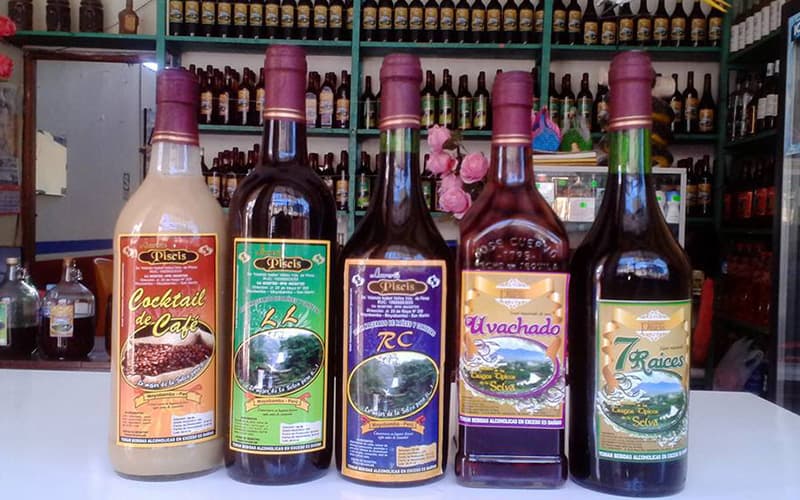
There are loads of different Amazonian liquors and spirits to be found in the jungle. Ask your bartender for one of these:
- Uvachado: made of grapes macerated in aguardiente (a strong local alcohol).
- Huitochado: made of Jagua (jungle fruit) macerated in aguardiente.
- Viborachado: made of vipers macerated in aguardiente.
- Coconachado: made of cocona (jungle fruit) macerated in aguardiente.
- Miskichado: made of honey macerated in aguardiente.
- Indanachado: made of indano macerated in aguardiente.
- Chuchuwasi: made of chuchuwasi roots macerated in aguardiente. Well-known for its medicinal properties.
- Saca Diablo: made of some medicinal plants macerated in aguardiente.
Nightlife in Moyobamba
The boulevard of Moyobamba is a hotspot that you simply cannot miss! It’s a great place for a night out, whether you stay in the bars or you head out to the clubs. Real nightlife in Moyobamba begins from Thursday, so there’s plenty of weekend for you to enjoy. Here you’ll find popular bars like George de la Selva and El Caserón which are offering exotic drinks like Tres al hilo (local roots macerated in aguardiente). The two principal clubs are located on the boulevard, Boulevard 110 and Discoteca Malecón. The vibe within the clubs is always welcoming, fun and safe. When you leave the place be careful and make sure to get a mototaxi to your hotel, especially if you’re on your own.
Where to stay in Moyobamba?
There are many places to stay in the Orchids’ City, the only question would be: what kind of lodging are you looking for? Something modern or rustic? Take a look and see just what Moyobamba has to offer:
- Alta Vista Casa Hotel: This is the perfect place for those looking for a hotel with spacious, modern and sophisticated rooms. There is also a beautiful swimming pool to enjoy during your stay. This is probably the best hotel in Moyobamba.
- Hotel Puerto Mirador: The perfect combination of rustic and modern style. Enjoy the rustic style of the rooms, while appreciating the restaurant or the bars modern style. The pool is available at any time.
- Hotel Rio Mayo: Located at the center of the city, this is one of the most popular hotels in Moyobamba. It has nice, comfortable rooms, a pool and a buffet breakfast.
- Hotel Marco Antonio: This is one of the most visited hotels, not just for the facilities but for the unique pool on the top floor of the building. Make sure you check it out!
Getting to Moyobamba
Travel to Moyobamba by air:
Take into account that Moyobamba does not have an airport. If you want to travel here by plane, your first stop will be Tarapoto. Tarapoto’s Guillermo del Castillo Paredes Airport has multiple daily flights to and from Lima (LATAM, Star Peru and Peruvian Airlines). Once you’ve landed in Tarapoto, take a colectivo taxi (special cars that transport people from Tarapoto to many different districts in the jungle) at the car station Autos Cajamarca, Turismo Tarapoto. It should cost S/. 20 each. It takes around two hours to get from Tarapoto to Moyobamba.
Travel to Moyobamba by bus:
There are many bus companies in Lima that go to Moyobamba.The major ones are Movil Tours and GH Bus. The route takes around 30 hours and it goes through the north coast of Peru, passing through Chimbote, Chiclayo and Bagua. The bus service includes lunch and breakfast. Tickets cost around S/. 130 to S/. 150, depending on the season.
Getting Around Moyobamba
Moyobamba is a small city so most people use motorcycles to get around, even over long distances. However the most common means of transportation are the Mototaxis (a kind of motorbike equipped to carry passengers) this especially applies to travelers. The official price is 2 soles, but for longer distances you can expect to pay around 3-5 soles. Of course, if you want to get some exercise, you can walk to where you need to go.
Safety in Moyobamba
Even though Moyobamba is considered one of the safest places in the jungle, never leave your stuff lying around as snatch theft can be a problem (as there is everywhere in Peru). Always make sure to take into account the safety conditions of where you intend to go when you’re planning a visit to a faraway place such as the waterfalls. It’s not recommended to go by yourself, try to ensure you travel in a group.
Traditional Dances of Moyobamba
Well known for bringing the community together, these exotic dances showcase the traditions of the community and bring happiness to the Moyobambinos and is an important part of the culture here in Moyobamba.
- La Pandilla: This dance is mostly performed during the celebration of the St. John’s and St. Peter’s Feasts- from June 24th to June 30th. Dancers wear traditional costumes;- midi flowered dresses for women, black pants with white t-shirts for men. They dance around the Humisha (a tall tree with hanging gifts) while a local band plays the music.
- Danza de la Izana: This dance represents the tribute of the people to the Cañabrava- a local plant used to build houses and fences. It’s a dance to show gratitude for everything that the tree provides to the community.
- Tahuampa: Folk dance as a local band plays the traditional music made by traditional instruments such as drums, snare drums, flutes and maracas.
Moyobamba Folklore
Have you ever heard about the legends of the Jungle? Moyobamba has plenty of “jungle ghosts” creeping around the forest. Find below a quick guide to recognizing these beasts, what they will do if they catch you, and how to spot them from an ordinary person going about their business…
- El Tunche: The lost soul of the jungle. People from Moyobamba believe that sometimes there are lost souls to be seen wandering the trees. These souls are said to be trying to solve a problem they couldn’t fix while they were alive. It is said that when you are close to a lost soul, you can hear a haunting bird whistle.
- Runamula: Runa means woman and Mula means mule, so perhaps you can already predict where this legend goes. This is an Amazonian legend that refers to punishments for adultery. Runamula is the physical realization of that- a woman who has been blinded by her desires and has received her punishment for it. The story tells of women who fall in love with forbidden men (married men, church members, or if the woman herself is married). These women are punished by a mysterious horseman. This horseman appears at the homes of these unfortunate women in the middle of the night and transforms her into a strange being; half woman, half mule. The horseman then rides the Runamula and punishes her with whips and lashes throughout the whole night. The next day, the woman can’t remember what happened… but she can feel the wounds that remain on her body.
- Chullachaqui: This magical being has no specific physical appearance, and it can transform into anything it wants (including family members and animals). It does this specifically to attract people-especially kids- deep in the forest where it steals their souls. It is said that the only way to recognize the Chullachaqui is by looking at its feet, as it has goat’s hooves…
Ayahuasca in Moyobamba
This traditional indigenous beverage, well-known not just for its medical properties but also for being an experience that cleanses your soul, your heart, and your mind (according to the people who have tried it). The exotic drink is made of local plants and roots that generate hallucinogenic effects. Ayahuasca is available at Tingana Ecological Reserve. Make sure to ask the guide during your tour of the place. It is only possible to consume the drink with a trained shaman, who will help to guide your experience.
A Few More Facts About Moyobamba
- There is an important native community near Moyobamba called Awajum. They are well-known for their customs, traditional dances, food and their drinks such as massato (a traditional drink made of yuca). The Awajum people speak a dialect that is very difficult to understand. They live in very rustic conditions like cabins. This is part of their culture. The community is often visited by travelers, predominantly for buying beautiful handicrafts like necklaces, earrings or key-rings, all made by local seeds. The practice is very traditional and it is thought to bring the wearer luck when worn.
- The Moyobamba dialect has some influence from the Quechua language. This is seen with some words that people still use today. An example would be buchisapa (buchi: stomach, sapa: big) a person with a big stomach; or cumpa, meaning friend.
- Moyobamba won the Guinness World Record for the largest La Pandilla dance. There were 1585 dance couples dancing around in the Plaza de Armas. Now La Pandilla is known as the biggest folkloric Peruvian dance in the world.
- There is a mix of cultures in Moyobamba. It is made up of Caucasian groups, including people from Spain and Italy. These people form around 70 percent of the population. There is also mixed-race people (Amerindian with caucasian) who form another 25 percent of the total population.
- Moyobamba has an agricultural-based economy. The most lucrative crops include rice, coffee and palm oil.
Visit Moyobamba!
Don’t miss out on any of the plentiful things to do in this hidden slice of paradise! Not just for touristic places or food, Moyobamba is an unforgettable experience to share with your family or friends. Enjoy the tradition and folklore of the city, and really take the time to know the culture. The city of the orchids is shocking the world in all the right ways.
